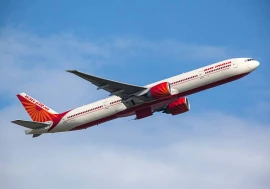_2100_x_1470.webp)
A passport can be made in 5 days. Visa, ticket—everything ready. You go, work in Dubai, send money home Easy.
This is how thousands of vulnerable men from Nepal and Bihar are lured into an illegal human trafficking route that stretches across porous borders and bustling cities. The Nepal-Bihar-Mumbai corridor has become a silent but deadly passage for illegal migration to the Gulf—fueled by fake agents, forged documents, and broken dreams.
The Route: Borderless and Lawless
Job-seekers from poor villages in Nepal and North Bihar are offered “dream packages” by local agents. With India-Nepal’s open border, these men easily cross into Bihar, where another layer of traffickers facilitate their journey to Mumbai. Here, Gulf-bound flights are just a forged visa away.
Forged Documents: A Parallel System
In Mumbai, forged passports, fake employment letters, and illegal e-visas are arranged with shocking ease. Many victims are unaware of the fraud—they believe they’re going legally. In reality, they're often listed as “visitors” and not “workers,” making them undocumented in Gulf nations.
The Exploitation Begins Overseas
Once they land, the trap tightens. Confiscated passports. No salary. Forced labour. Sometimes, victims are sold to contractors or private households, trapped in domestic servitude or construction work under inhumane conditions.
- Why Nepal-Bihar? Why Mumbai?
- The choice of this corridor is strategic:
- Nepal: No visa needed to enter India.
Bihar: One of India’s poorest states with a high supply of job-seekers.
Mumbai: A global departure hub where trafficking networks are well-entrenched.
Legal Blind Spots and Lack of Awareness
Most migrants don’t verify recruitment licenses. They trust village-level agents or relatives. Local police often remain unaware or complicit. Gulf countries, meanwhile, have strict laws—but victims have no legal protection once labeled as illegal entrants.
Voices From the Void
Rajeev, 27, from Sitamarhi, paid ₹1.5 lakh for his Dubai dream. “I worked for 9 months without salary. They beat me when I asked. My passport was gone. I escaped to the embassy.” His case is one of thousands—rarely reported, barely recorded.
Conclusion
This invisible route is a human trafficking conveyor belt—built on poverty, deception, and administrative apathy. Until governments on both ends step in with tighter checks, massive awareness drives, and real job creation, the corridor from Nepal to the Gulf via Bihar and Mumbai will keep swallowing more lives—silently.

